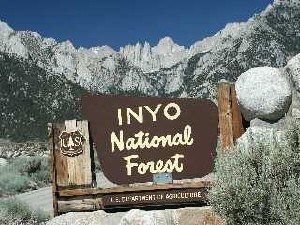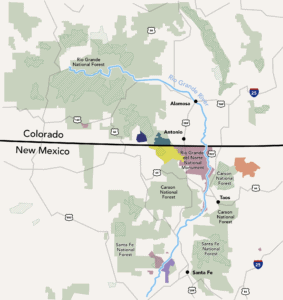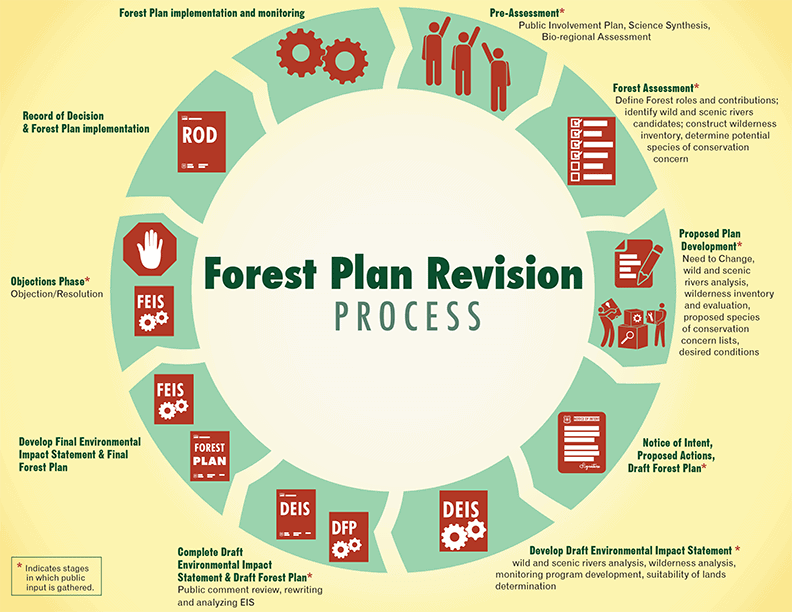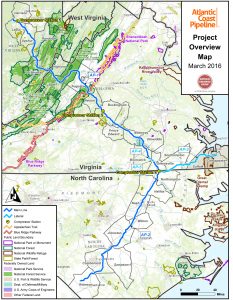This is a Certified NCFP/Smokey Wire Classic. It used to be a tab at the top of the site. I’m moving it to this one very long post so that it can continue to be found and we have more space for tabs. The idea was (although Andy can certainly say so himself) to meet the requirements of NFMA without unnecessary (analysis? drama?). Now that we have the 2012 Rule and are implementing it, does the KISS Rule look any different than during the development of the 2012?
Andy’s Keep-It-Simple-Sweet proposed NFMA rules are contained in the following posts together with associated commentary:
K.I.S.S. Part I
K.I.S.S. Part II
K.I.S.S. Rule Language, Purpose and Principles
K.I.S.S. Vegetation Management and Timber Harvest
K.I.S.S. Assessment of New Information and Changed Circumstances
K.I.S.S. Inventories and Interdisciplinary Process
K.I.S.S. Public Participation
K.I.S.S. Plant and Animal Diversity
K.I.S.S. Plan Consistency
K.I.S.S. Assessment of New Information, Continued
K.I.S.S. Maps
K.I.S.S. Conclusion
K.I.S.S. Word Count
Here is the complete K.I.S.S. rule text:
36 CFR 219.1: Purpose and principles
(a) The rules in this subpart set forth the process for revising land management plans for units of the National Forest System as required by the Forest and Rangeland Renewable Resources Planning Act of 1974, as amended. Land management plans shall be revised when conditions in a unit have significantly changed, but no less frequently than every fifteen years.
(b) A land management plan revision shall:
(1) Decide the vegetation management and timber harvest program and the proportion of probable methods of tree removal;
(2) Include an assessment of new information and changed circumstances since adoption of the previous land management plan or revision thereof;
(3) Be prepared by an interdisciplinary team;
(4) Be based upon inventories appropriate to inform the decisions made by the plan revision;
(5) Involve the public in its promulgation;
(6) Provide for the diversity of plant and animal communities and preserve the diversity of tree species; and,
(7) Review previous decisions to classify lands as suited or not suited for timber production if the prior classification decision is older than ten years.
36 CFR 219.2: Vegetation Management and Timber Harvest Program.
(a) The vegetation management and timber harvest program (“program”) shall include the site-specific vegetation management activities, including the sale of timber, purchase of vegetation management services by stewardship or other contractual method, and fire use necessary to meet the plan’s goals and objectives for a period of one to three years. An environmental impact statement shall be prepared for the program, if required by Section 102(2)(C) of the National Environmental Policy Act (“NEPA”), 42 U.S.C. § 4321 et seq. The program can be amended at any time. All amendments shall comply with NEPA procedures.
(b) A vegetation management activity included in the program shall not be subject to the notice, comment or appeal requirements of the Forest Service Decisionmaking and Appeals Reform Act, 16 U.S.C. 1612 (notes), but shall be subject to the objection procedures contained in this subpart.
(c) Program activities shall be conducted only on lands suitable for the activity.
(d) Program activities shall maintain viable populations of existing native and desired non-native species in the planning area.
(e) Program activities shall be consistent with the plan’s standards and guidelines, or the standard or guideline shall be revised pursuant to this subsection.
(f) Before stands of trees are harvested, the stand’s average annual growth shall have culminated calculated on the basis of cubic measurement or other method at the discretion of the responsible official. Stands can be thinned before growth has culminated. Salvage or sanitation harvesting of timber stands that are substantially damaged by fire, windthrow or other catastrophe, or that are in imminent danger from insect or disease attack, can be harvested before growth has culminated.
(g) Timber will not be harvested where soil, slope, or other watershed conditions will be irreversibly damaged.
(h) Timber will not be harvested where adequate restocking within five years is not assured.
(i) Timber will not be harvested where water conditions or fish habitat are likely to be seriously and adversely affected by detrimental changes in water temperatures, blockages of water courses, or deposits of sediments.
(j) The timber harvest system will be selected based upon meeting the plan’s goals and objectives and not primarily upon the greatest dollar return or the greatest unit of output of timber.
(k) Timber harvest designed to regenerate an even-aged stand of timber will be used only where:
(1) For clearcutting it is the optimum method to meet the plan’s goals and objectives;
(2) For other even-aged methods it is appropriate to meet the plan’s goals and objectives;
(3) The harvest activity is included in the program and has been assessed pursuant to this subpart;
(4) Cut blocks, patches, or strips are shaped and blended to the extent practicable with the natural terrain;
(5) The area to be cut in one harvest operation (e.g., one cut block) does not exceed the maximum size limit established by the land management plan. If the plan has no maximum size limits, even-aged harvest cannot proceed until the plan is revised to include maximum size limits. Maximum size limits may be exceeded after public notice and review by the responsible Forest Service officer one level above the Forest Service officer who normally would approve the harvest activity. Maximum size limits shall not apply to the size of areas harvested as a result of natural catastrophic conditions such as fire, insect and disease attack, or windstorm; and,
(6) The even-aged harvest protects soil, watershed, fish, wildlife, recreation, and esthetic resources, and assures the regeneration of trees.
36 CFR 219.3: Assessment of New Information and Changed Circumstances.
(a) The revision shall assess new information and changed circumstances and conditions in the unit that are relevant to the decisions made in the land management plan. If the new information or changed circumstances and conditions warrant amendments to the land management plan, the land management plan amendments shall be assessed as a part of the vegetation management and timber harvest program’s NEPA document. If the land management plan amendments, singly or in combination with the vegetation management and timber harvest program, require an environmental impact statement pursuant to Section 102(2)(C) of the National Environmental Policy Act (“NEPA”), 42 U.S.C. § 4321 et seq., an environmental impact statement shall be prepared.
(b) The assessment shall determine whether new information or changed circumstances warrant a review of lands the Forest Service has classified as suitable or unsuitable for timber production. The review shall focus on, but is not limited to, lands proposed for timber harvest in the plan revision’s vegetation management and timber harvest program.
36 CFR 219.4: Inventories.
The revision shall be based upon inventory data, maps, graphic material, and explanatory aids, of a kind, character, and quality, and to the detail appropriate for the land management plan revisions and vegetation management and timber harvest program decisions made.
36 CFR 219.5: Interdisciplinary Preparation.
An interdisciplinary approach shall be used in the revision of the land management plan. The disciplines of the preparers shall be appropriate to: 1) the formulation of the vegetation management and timber harvest program; and, 2) the new information and changed circumstances and conditions in the unit that warrant revision of the plan.
36 CFR 219.6: Public Participation.
(a) The revised land management plan shall be made available to the public electronically and at convenient locations in the vicinity of the unit for a period of at least three months before the revised plan is adopted. During this three-month period, public meetings at locations that foster public participation in the plan revision shall be held.
(b) If the land management plan revisions, singly or in combination with the vegetation management and timber harvest program, require an environmental impact statement pursuant to Section 102(2)(C) of the National Environmental Policy Act (“NEPA”), 42 U.S.C. § 4321 et seq., the public participation process set forth in Council on Environmental Quality regulations, 40 CFR Part 1500 et seq., shall be followed.
(c) In addition to the requirements of (a) and (b) above, other processes suited to the decisions made in the plan revision, including the vegetation management and timber harvest program, may be used to involve the public.
36 CFR 219.7: Plant and Animal Community Diversity.
(a) Plan revisions and the vegetation management and timber harvest program shall ensure habitat sufficient to support viable populations of existing native and desired non-native species in the planning area. Methodologies for assessing and ensuring species viability shall consider and be appropriate to 1) the scope and scale of the plan revision and program decisions made; 2) the ecology of the plan area; and, 3) the biology of the species.
(b) Plan revisions and the vegetation management and timber harvest program shall, to the degree practicable, preserve the diversity of tree species similar to that existing in the plan region.







